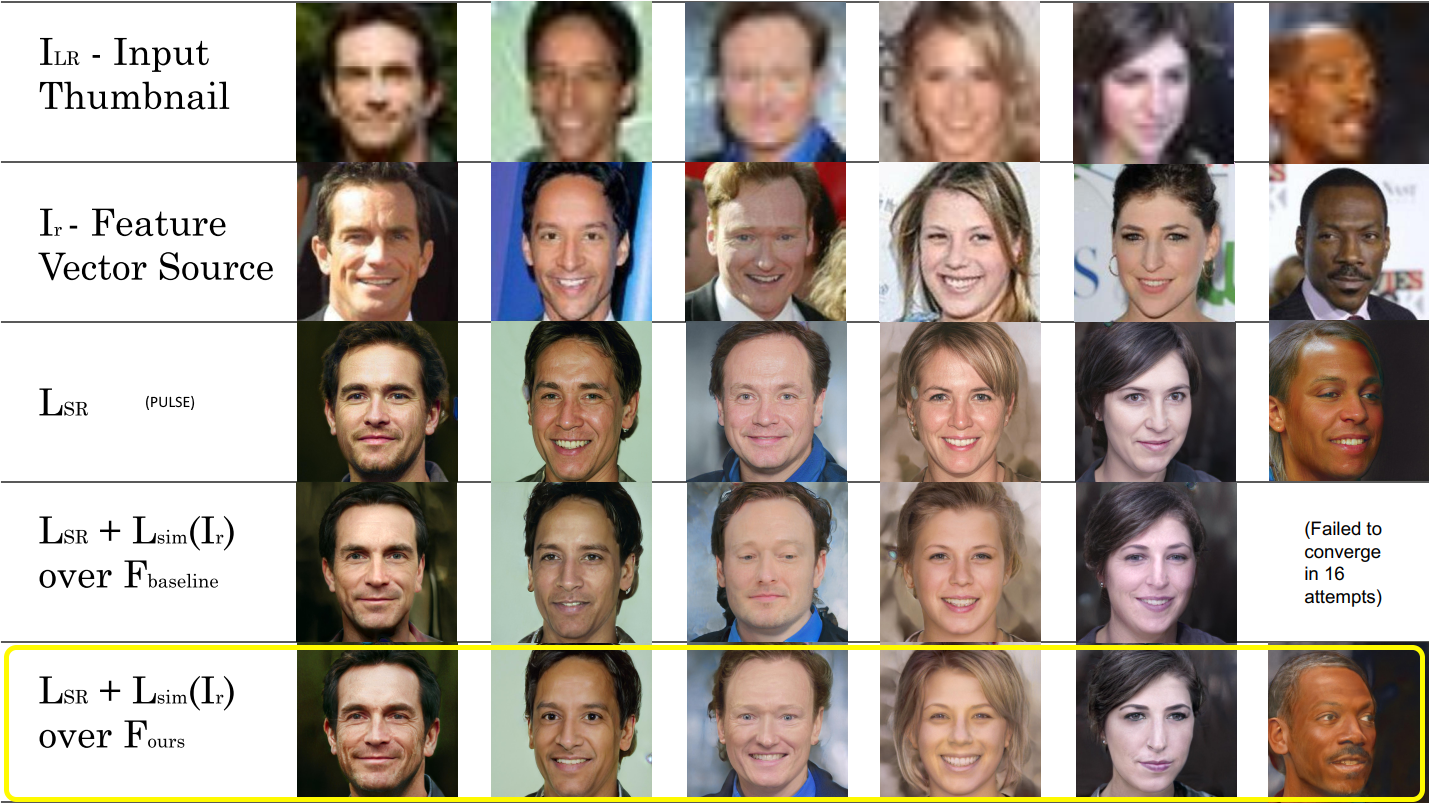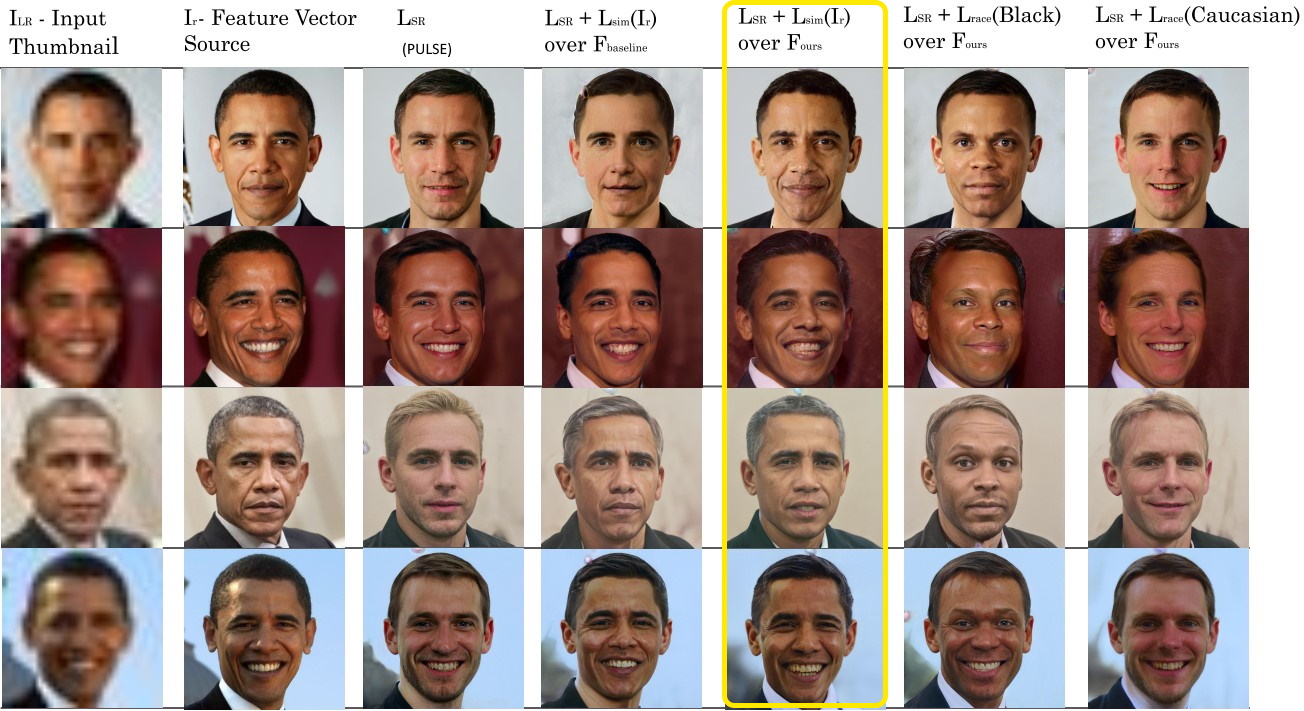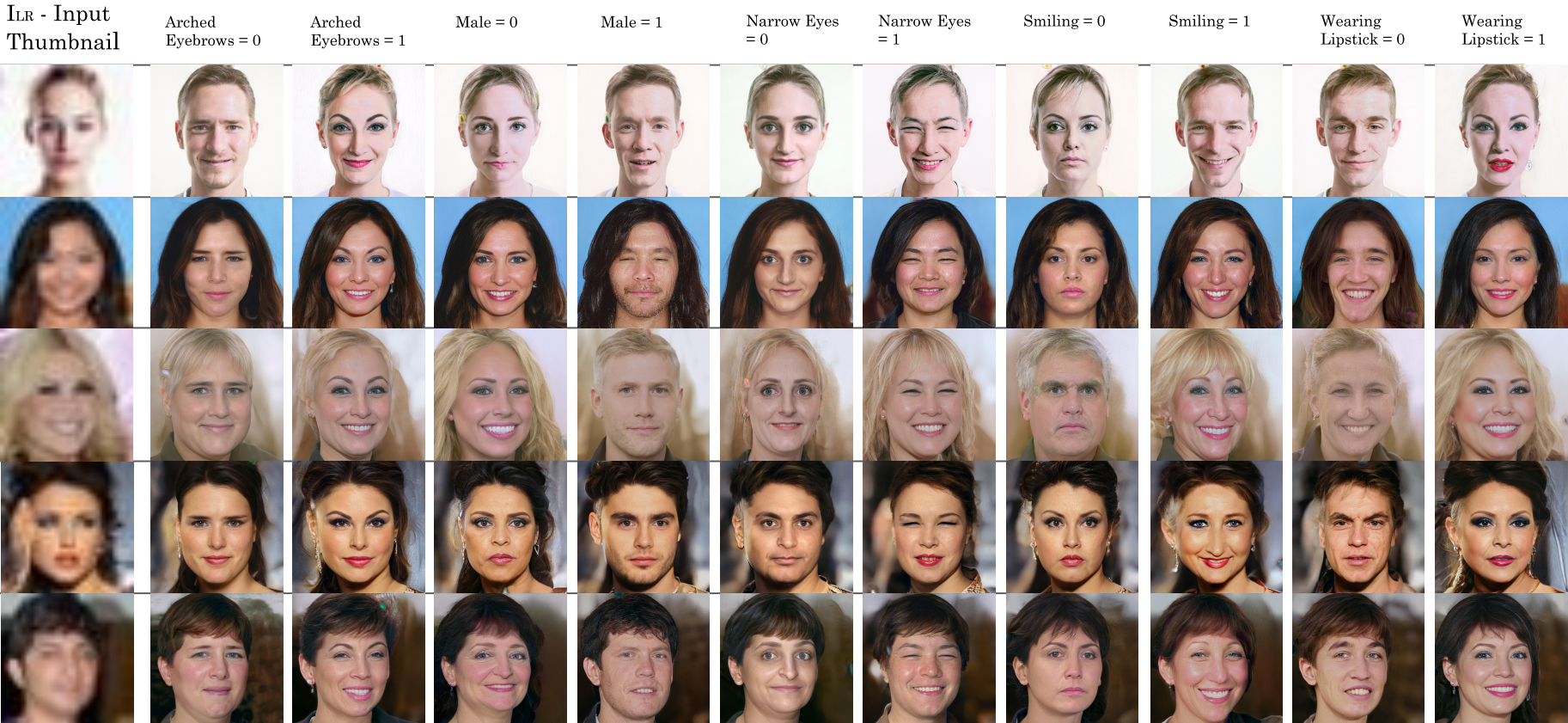Identity and Attribute Preserving Thumbnail Upscaling
Accompanying Code for the Accepted ICIP 2021 Paper IDENTITY AND ATTRIBUTE PRESERVING THUMBNAIL UPSCALING by Noam Gat, Sagie Benaim and Lior Wolf.
Abstract
We consider the task of upscaling a low resolution thumbnail image of a person, to a higher resolution image, which preserves the person's identity and other attributes. Since the thumbnail image is of low resolution, many higher resolution versions exist. Previous approaches produce solutions where the person's identity is not preserved, or biased solutions, such as predominantly Caucasian faces. We address the existing ambiguity by first augmenting the feature extractor to better capture facial identity, facial attributes (such as smiling or not) and race, and second, use this feature extractor to generate high-resolution images which are identity preserving as well as conditioned on race and facial attributes. Our results indicate an improvement in face similarity recognition and lookalike generation as well as in the ability to generate higher resolution images which preserve an input thumbnail identity and whose race and attributes are maintained.
Architecture
Face Feature Extraction
We build upon the face feature extraction architecture of ArcFace, and add additional training losses to explicitly preserve identity, race and facial attributes:
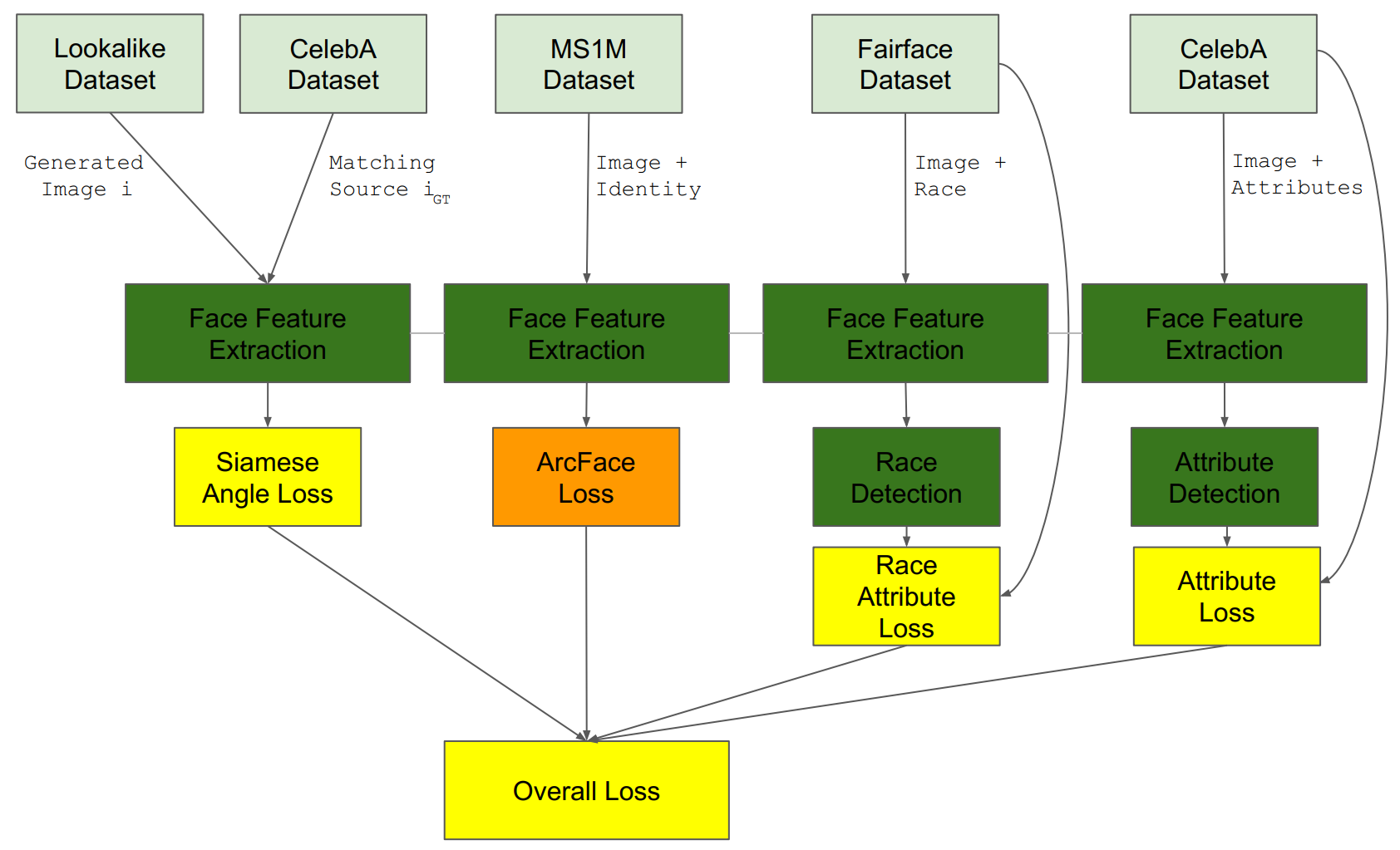 Note that the feature extraction network is the same one with the same weights for all tasks.
Note that the feature extraction network is the same one with the same weights for all tasks.
Face Generation
We then use this augmented feature extractor to generate faces with a technique similar to PULSE, with additional user-provided goals to control the identity of the generated faces:
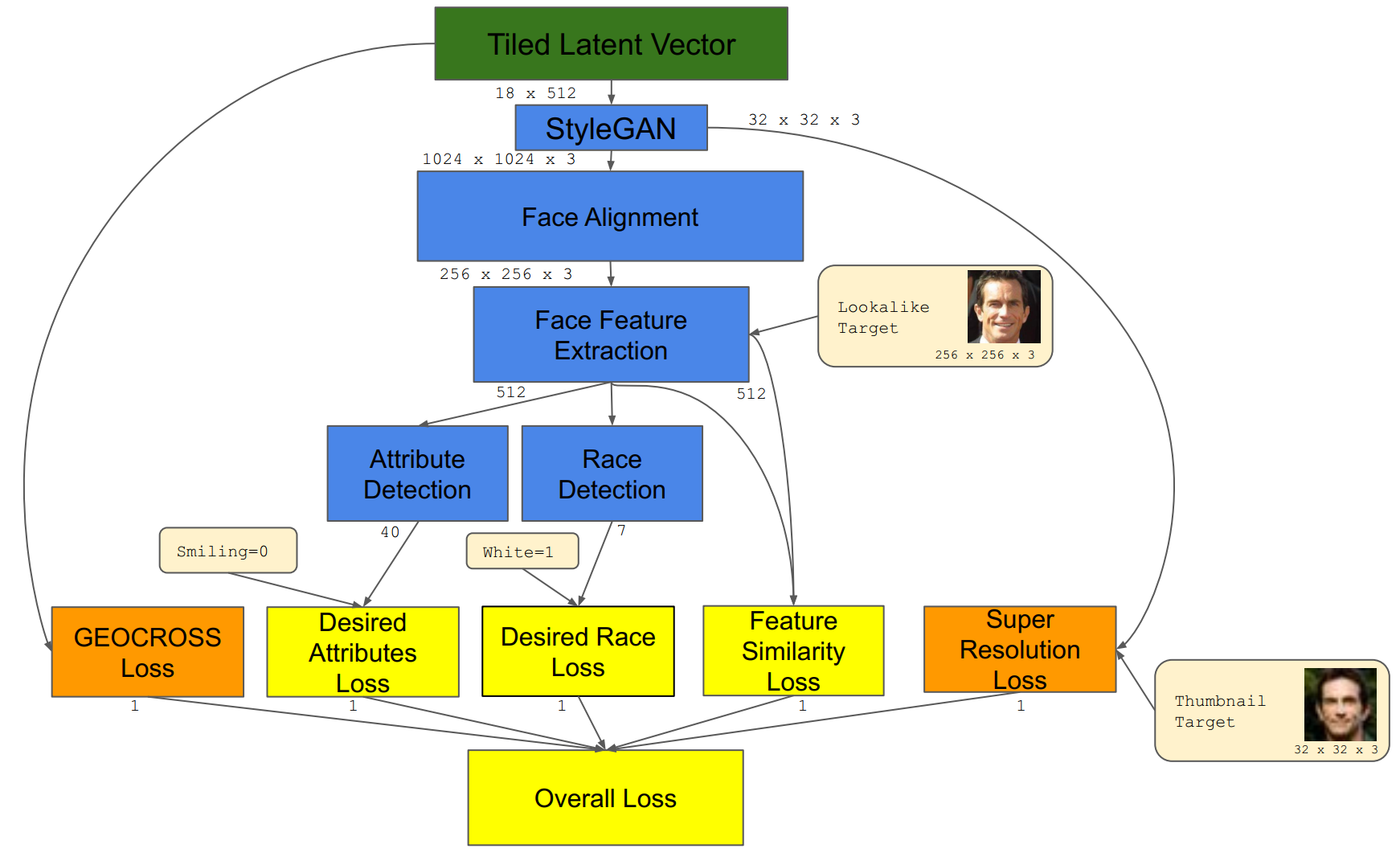
Results
Similar Identity
Implicit and Explicit Ethnic Target
Explicit Attribute Target
Running Instructions
You must have a working model in order to run.
The full argument list can be found in run.py.
For a ready to run example, see run_obama.sh.
There is currently a hard-coded hack in place in loss.py:72, if you use ATTR_X_IS_0/1 loss for faces, leave the code unchanged. For attributes, comment out lines 72-74.
Training instructions
MS1M Dataset
- Download ms1m-retinaface-t1.zip from https://github.com/deepinsight/insightface/wiki/Dataset-Zoo , place in InsightFace_v2/data
- run
InsightFace_v2/extract.py - Install conda environment from
preprocess.yml - run
python pre_process.pyfrom InsightFace_v2 directory
Fairface Dataset
- Download Fairface Database with 0.25 Padding from https://github.com/joojs/fairface and place in fairface directory of root directory
- Run
python fairface_dataset.pyfrom InsightFace_v2 directory
CelebA Dataset
- Run
python download_celeba.pyfrom root directory - Run
python align_face.py CelebA_Raw CelebA_Large 256 - Run
python align_face.py CelebA_Raw CelebA_Small 32
Adversarial Dataset
Download dataset from https://drive.google.com/file/d/1lnp7d9FEGgPFsuDwoqMVITFs_dIFRyJ-/view?usp=sharing
and extract in main directory.
Train the face feature extactor
- Run
python train.pyfrom InsightFace_v2 directory. You may have to adjust batch_size parameter based on GPU memory. This will train the model with just the Arcface loss. - Run
python train.py --adverserial --fairface --attr --checkpoint <step10result> --checkpoint_suffix _fullfrom InsightFace_v2 directory.
Create a configurator file based on your trained model
- There are two sample configs in
configs/arcface_best.yml/configs/arcface_latest.ymlwhich use the result of 11 by default
Pretrained model
Coming soon
